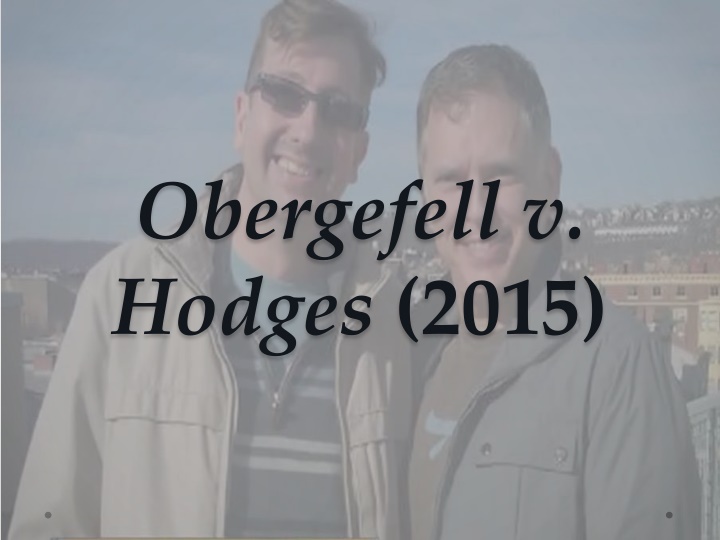Landmark Case: Obergefell v. Hodges (2015) and Its Impact on Marriage Equality
Ohio couple's struggle for recognition of their out-of-state marriage due to a discriminatory law led to the significant Supreme Court case Obergefell v. Hodges (2015). This case overturned Ohio's ban on same-sex marriage, setting a precedent for marriage equality nationwide. The involvement of interest groups, legal battles, and decisive Supreme Court rulings are pivotal in understanding the evolution of LGBTQ+ rights in the United States.
Download Presentation

Please find below an Image/Link to download the presentation.
The content on the website is provided AS IS for your information and personal use only. It may not be sold, licensed, or shared on other websites without obtaining consent from the author.If you encounter any issues during the download, it is possible that the publisher has removed the file from their server.
You are allowed to download the files provided on this website for personal or commercial use, subject to the condition that they are used lawfully. All files are the property of their respective owners.
The content on the website is provided AS IS for your information and personal use only. It may not be sold, licensed, or shared on other websites without obtaining consent from the author.
E N D
Presentation Transcript
Obergefell v. Hodges (2015)
Background Ohio couple married in Maryland as one man was dying of ALS. Survivor denied surviving spouse status as Ohio law only recognized traditional marriage.
Federal District Court Dist. Court Judge ruled Ohio law discriminatory under the 14thAmend. Equal Protection Clause. Ohio appealed to 6thcircuit Court of Appeals in Cincinnati.
6thCircuit 6thCircuit took an originalist view no federal issue involved. First federal appeals court to uphold a ban on same-sex marriage. Obergefell appealed to S.C.. circuit split
Interest Group involvement GLAD (Gay & Lesbian Advocates & Defenders) picked up tab for Obergefell. Roughly 150 amicus briefs filed (including one by the Obama administration).
Supreme Court Supreme Court granted certiorari and heard oral arguments in April 2015. U.S. v. Windsor (2013) which struck down DOMA is an important precedent.
U.S. v. Windsor (2013) Court ruled 5-4 that the Defense of Marriage Act (DOMA) violated the equal protection standard inherent in the 5th Amendment. Decision required the federal government to recognize same-sex marriages.
Windsor split on the Court Ginsburg Roberts Scalia Thomas Alito Breyer Sotomayor Kagan Kennedy
Obergefell decision Announced in June 2015. Ohio law banning gay marriage struck down 5-4. Justices voted same as Windsor. Kennedy wrote the decision. Each justice in minority wrote his own dissent.
Where can I use this? Federalism 10th Amendment 14th Equal Protection Expansion of federal power Interest Groups multiple access points Liberals v. Conservatives Influence of public opinion on public policy.
Where can I use this? Judicial Review. Checks & Balances. Amicus curiae (or green ) briefs. Center controls the Court. Judicial Activism v. Restraint. Stare decisis. Certiorari( circuit split ).

